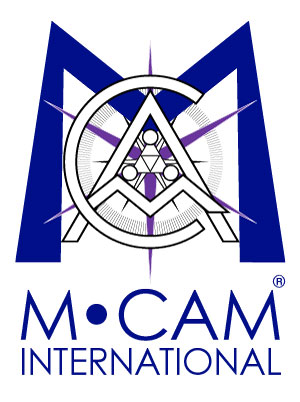M·CAM Index Q1 Rebalance Report
April 1st, 2020 Rebalance Highlights
The 1st quarter of 2020 has witnessed significant global economic downturns largely catalyzed by the global outbreak of SARS-CoV-2 and its associated COVID-19 illness. International production and supply chains have been greatly impacted as COVID-19 confirmed cases rise from 314 to 517,678 from January 21st to March 28th, 2020, according to the World Health Organization’s daily reports. Concerns and fears in the global financial market, especially the U.S. market, resulted in record-breaking volatility throughout the month of March. The S&P 500 index dropped 27.60% from March 2nd to March 23rd. The U.S. stock market “circuit breaker” has been triggered 4 times during the 10 days from March 9th to March 18th. In the U.S., the number of people filing for unemployment insurance in the week ended March 21st, 2020 increased to 3.28 million, dwarfing previous highs in Labor Department reports since 1967. Consequently, a series of new economic stimulating policies has been entitled by major economic entities across the globe. According to IMF as of March 24th, in the U.S., a $2 trillion (around 10% GDP) stimulus package is being implemented, pending approval in the U.S. Congress in the coming days. An estimated 1.3 trillion RMB (1.2% of GDP) expansion plan has been approved and is being implemented by the Chinese government. Although the major financial markets have recovered temporarily during the last week of March as a response to these “crisis relief” actions, the global economic recovery outlook remains obscured.
M·CAM’s view of innovation activity by corporations around the world indicates that several companies have prioritized innovation investment in agility in manufacturing and distribution – responsiveness to concerns highlighted by the recent global supply chain uncertainty. Technology transfer as a component of global procurement continues to play a role in transactions but is generally falling out of favor in several markets. Traditional relationships in the healthcare sector have been significantly impacted by supply and demand mismatches. Industrial production, in certain cases, has been altered to meet the technical demands of technologies deemed critical to respond to the pandemic. This is noteworthy for many reasons but, principle among them is the fact that in the face of the COVID-19 situation and U.S.- China trade conflict, domestic supply of innovation is taking on an increasing relevance in markets that historically were net technology importers. Recent aerospace, defense, and communications announcements by Russia, China, and North Korea highlight the growing competitive power of international science and technology investments beginning to pay commercial dividends in technology industries.
Innovation α® Global Index & Innovation α® United States Index
Technology manufacturing and service sectors for the indexes remain strong moving into the Q2 2020 thanks to the signs of ongoing consumer spending power and confidence. Innovative companies in these sectors can be the biggest beneficiaries of the government’s economic stimulating policies. The weight of the Consumer Non-Durables sector also increased significantly for both of the indexes for Q2, possibly due to the boosted sales of groceries during the pandemic outbreak and their relatively stable financial market performance during the crisis. Additionally, the Q2 weights meet our expectation of favoring companies that have received government patronage or make collaborations with other entities to relieve the COVID-19 crisis. For example, General Electric (GE-US) has partnered with other companies like 3M and Ford to manufacture respirators and ventilators to combat the coronavirus since late March. Its index weight has been set to 3.81% and 1.12% for the United States and Global Indexes respectively for Q2, compared to their 1% and 0.83% company weight average.
In general, the expectation for the first quarter of 2020 of market resilience fueled by innovation is generally focused on companies with diversified business sectors and supply chains, feasible and flexible management abilities in intellectual property, and demonstrated capability in global integration. In the global market, it is particularly noteworthy to see that non-energy minerals suppliers are expected to continue to place more innovation value add in their operations suggesting that the market is beginning to realize that how natural resources are supplied and prepared is becoming increasingly dependent on both materials and process innovation.
Click here to download the full quarterly index report (includes data)


Sorry, the comment form is closed at this time.